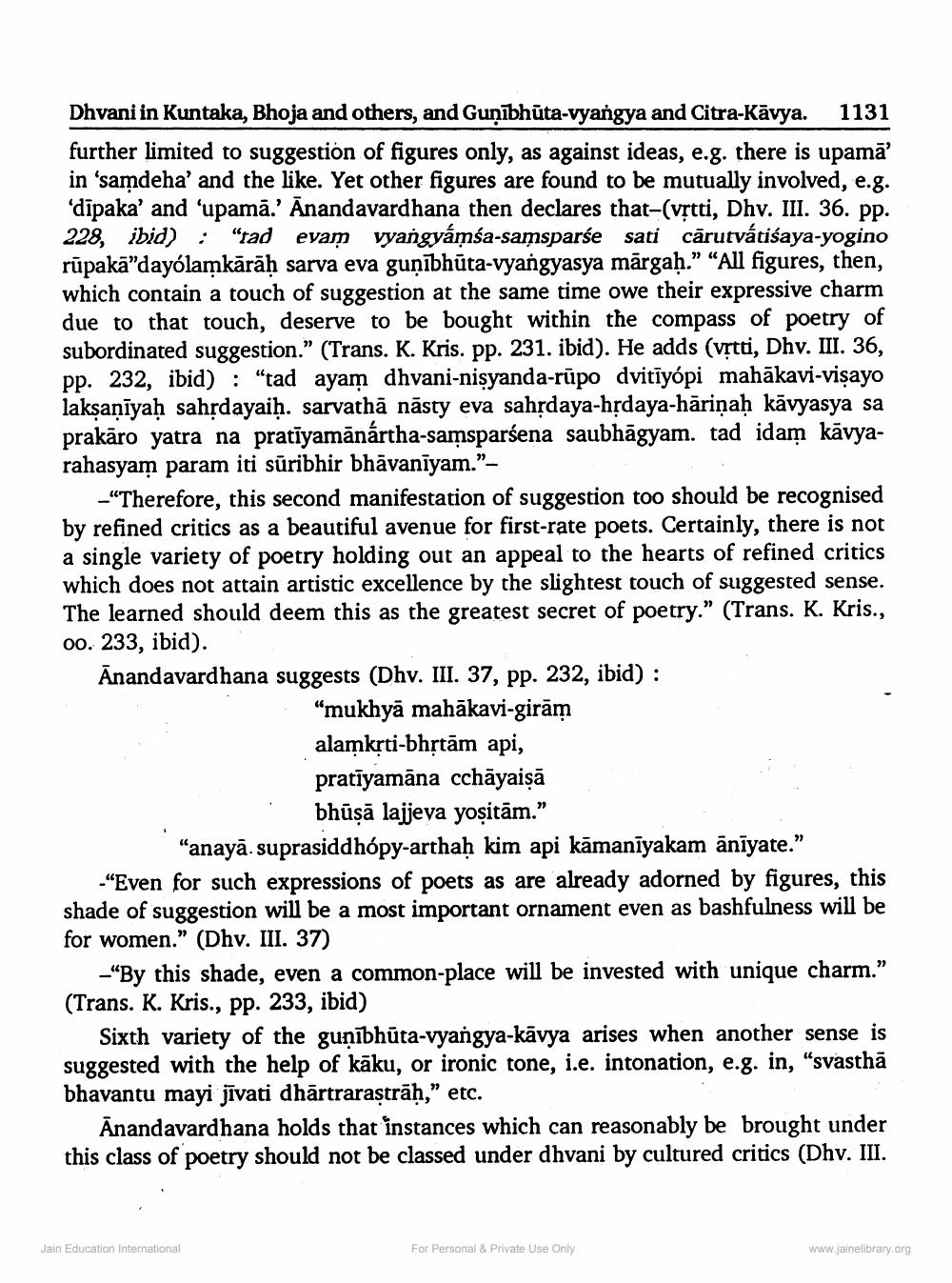________________
Dhvani in Kuntaka, Bhoja and others, and Gunībhūta-vyangya and Citra-Kävya. 1131 further limited to suggestion of figures only, as against ideas, e.g. there is upamā in 'samdeha' and the like. Yet other figures are found to be mutually involved, e.g. 'dīpaka' and 'upamā.' Anandavardhana then declares that-(vrtti, Dhv. III. 36. pp. 228, ibid) : “tad evaņ vyangyámía-samsparse sati cārutvátiśaya-yogino rūpakā"dayólamkārāḥ sarva eva guṇībhūta-vyangyasya mārgah.” “All figures, then, which contain a touch of suggestion at the same time owe their expressive charm due to that touch, deserve to be bought within the compass of poetry of subordinated suggestion.” (Trans. K. Kris. pp. 231. ibid). He adds (vrtti, Dhv. III. 36, pp. 232, ibid) : "tad ayam dhvani-nisyanda-rūpo dvitīyópi mahākavi-visayo lakṣanīyaḥ sahrdayaiḥ. sarvathā nāsty eva sahrdaya-hrdaya-hāriņaḥ kāvyasya sa prakāro yatra na pratīyamānártha-samsparśena saubhāgyam. tad idam kāvyarahasyam param iti sūribhir bhāvanīyam.”
-“Therefore, this second manifestation of suggestion too should be recognised by refined critics as a beautiful avenue for first-rate poets. Certainly, there is not
variety of poetry holding out an appeal to the hearts of refined critics which does not attain artistic excellence by the slightest touch of suggested sense. The learned should deem this as the greatest secret of poetry.” (Trans. K. Kris., 00. 233, ibid). Ānandavardhana suggests (Dhv. III. 37, pp. 232, ibid) :
“mukhyā mahākavi-girām alamkrti-bhstām api, pratīyamāna cchāyaiņā
bhūṣā lajjeya yoșitām.” "anayā. suprasiddhópy-arthaḥ kim api kāmanīyakam ānīyate." -“Even for such expressions of poets as are already adorned by figures, this shade of suggestion will be a most important ornament even as bashfulness will be for women.” (Dhv. III. 37)
-“By this shade, even a common-place will be invested with unique charm.” (Trans. K. Kris., pp. 233, ibid)
Sixth variety of the guņābhūta-vyangya-kāvya arises when another sense is suggested with the help of kāku, or ironic tone, i.e. intonation, e.g. in, “svasthā bhavantu mayi jīvati dhārtraraştrāḥ," etc.
Anandavardhana holds that instances which can reasonably be brought under this class of poetry should not be classed under dhvani by cultured critics (Dhv. III.
Jain Education International
For Personal & Private Use Only
www.jainelibrary.org




